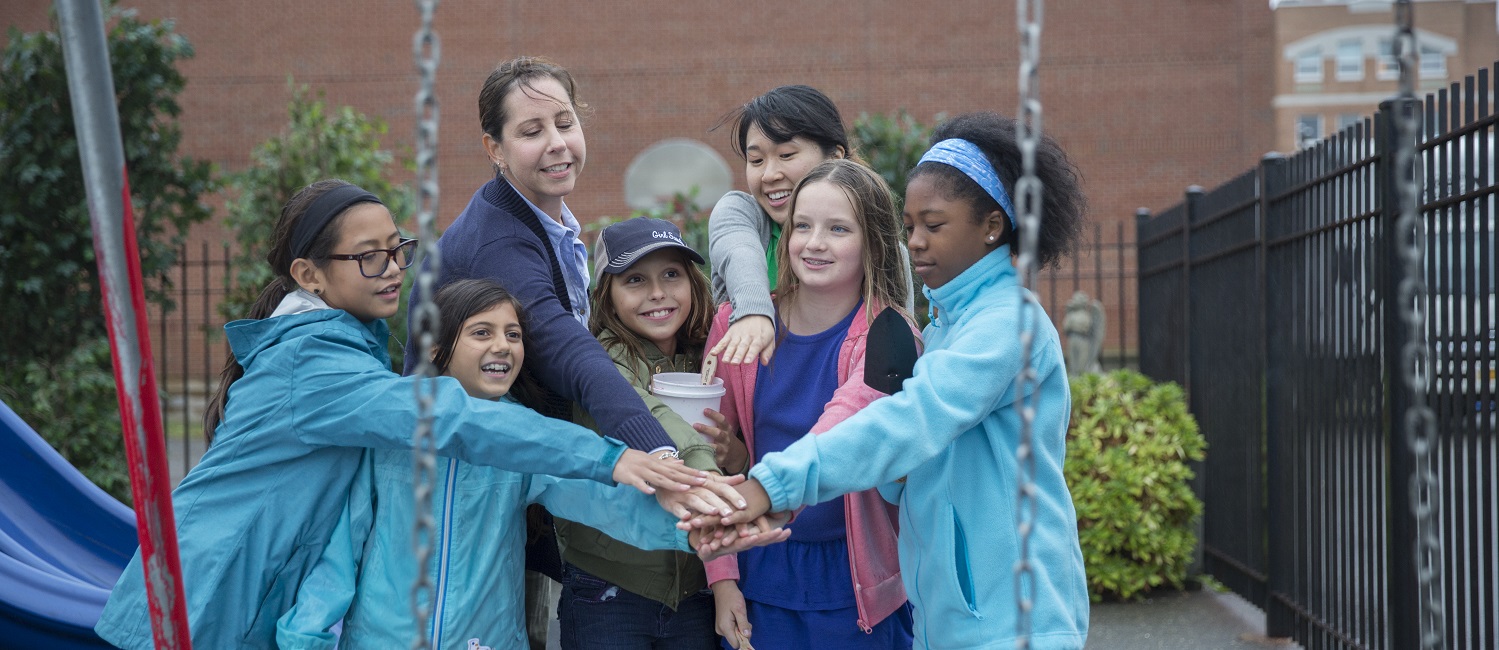New Troop Leader? 5 Things to Know Before That First Meeting!
Sweaty palms? Nervous laugh? Reading the same sentence in Volunteer Essentials over and over again? You just might have first troop meeting jitters!
If you’re a new leader—or new to Girl Scouting—it's completely normal to feel a little anxious about leading a group of girls, whom you may or may not know, and being a driving force in their Girl Scout experience. But with some preparation and flexibility, you can set the tone for a fun troop meeting where girls feel welcome and empowered. Our Volunteer Experts shared their five favorite ways to prepare for that first meeting.
Ask about new leader-specific resources.
Your council’s got your back with official troop leader training and resources, but be sure to ask about any support they offer specifically for new leaders.
“My council gave us a readiness toolkit with what we can expect from the council as far as support, icebreaker ideas, and how to get parents involved,” remembers Maranda Oliver, a troop leader in Girl Scouts Wisconsin Badgerland.
“Before my first troop meeting, I attended a meeting my service unit manager held for first-time Daisy leaders,” shares Khadijah Pinckney, a troop leader in Girl Scouts of Northern New Jersey. “Former Daisy leaders helped us with tips and tricks and answered any questions we had. She did that for each level, and that helped settle fears that I may have had at that time.”
“Use your resources, like the Volunteer Toolkit, which has the first meeting planned in fifteen-minute increments and even gives you sample ways to say things—a nice way to overcome first-meeting jitters!” says Dylan Newton of Girl Scouts of West Central Florida.
Discover your girls’ interests before the meeting.
Many troop leaders send a survey to their girls before the first meeting to get a sense of their interests. “It was important to know what new girls had previously experienced and what they hoped to get from being a part of a new troop,” advises Jen Quaranta, a troop leader in Girl Scouts Spirit of Nebraska. “The survey helped girls who needed more time to think about responses and [engaged] families as well. And having [the survey delivered electronically] helps me keep responses together. I can go back to look at the answers during the year without worrying about losing them.”
Decide if families will attend the first troop meeting.
100% of troops with the most satisfied leaders and families report they hold dedicated parent meetings. But for that very first troop meeting, consider whether having parents and caregivers present will help move the meeting along.
“We made a point to ask the adults to drop off and pick up their girls only, so the girls could focus on the troop without distraction,” shares Rebecca Deitzer of Girl Scouts of Western New York.
Beth Brow of Girl Scouts of the Green and White Mountains, however, found that having families present kept everyone on track with forms, scheduling, and other troop matters. She does, however, give the girls space to brainstorm. “[We have a] work circle, where all girls sit in a circle—no adults allowed—and they begin looking through the badges, awards, and any activities they may want to do,” she says.
Recruit help where you need it.
If you have a large troop, don’t be afraid to tap into your Girl Scout community for some extra help! “Another thing that I believe was very important was to have the help of a few Juniors from a sister troop, who assisted our new Daisies with a craft and taught them the Make New Friends song,” says Silvia La Falce of Girl Scouts of Greater Chicago and Northwest Indiana. “They kept assisting at several meetings throughout the year, which showed our girls the meaning of sisterhood firsthand.”
“To get ready, I had the support of another leader who led older troops,” explains Melanie Boudreault of Girl Scouts Spirit of Nebraska. “She helped me get in touch with the right people in our council that provide supports for new leaders, and she also helped me with basic activities to do with the girls and their parents.”
Above all: do whatever helps you feel most prepared!
“My co-leader and I mapped out a schedule of how the meeting would flow and identified who would do what,” says Denise Montgomery of Girl Scouts of San Diego. “We allowed some extra time since we had a large troop and wanted to be realistic about how much we would get done in the first meeting.”
“I had an outline of my ‘important stuff’ that I didn’t want to forget,” says Rebecca. “Having a handout was very helpful for my confidence as I knew, after many revisions, that it was upbeat, inviting, and had everything we wanted to share in one spot.”
“For my very first troop meeting, I was an assistant leader with no experience at all; I wasn't a Girl Scout growing up,” says Silvia. “My way to cope with the lack of experience and confidence was to prepare, prepare, and prepare! Whether a craft, a song, or a game, if I had tried it enough times and was comfortable enough on my own, it felt comfortable at meeting time.”
“I went through the Brownie binder and got familiar with the badges and Journeys available to [that grade level],” says Becca Briggs, a troop leader in Girl Scouts of Citrus. “I'm kind of detail oriented, so I made a few lists of things I wanted to talk about with the parents and the girls. I also pulled out all my old Girl Scout vests and sashes, books, and photos. Remembering all my good times in Girl Scouts really helped me get excited about giving girls the opportunity to have the same.”


